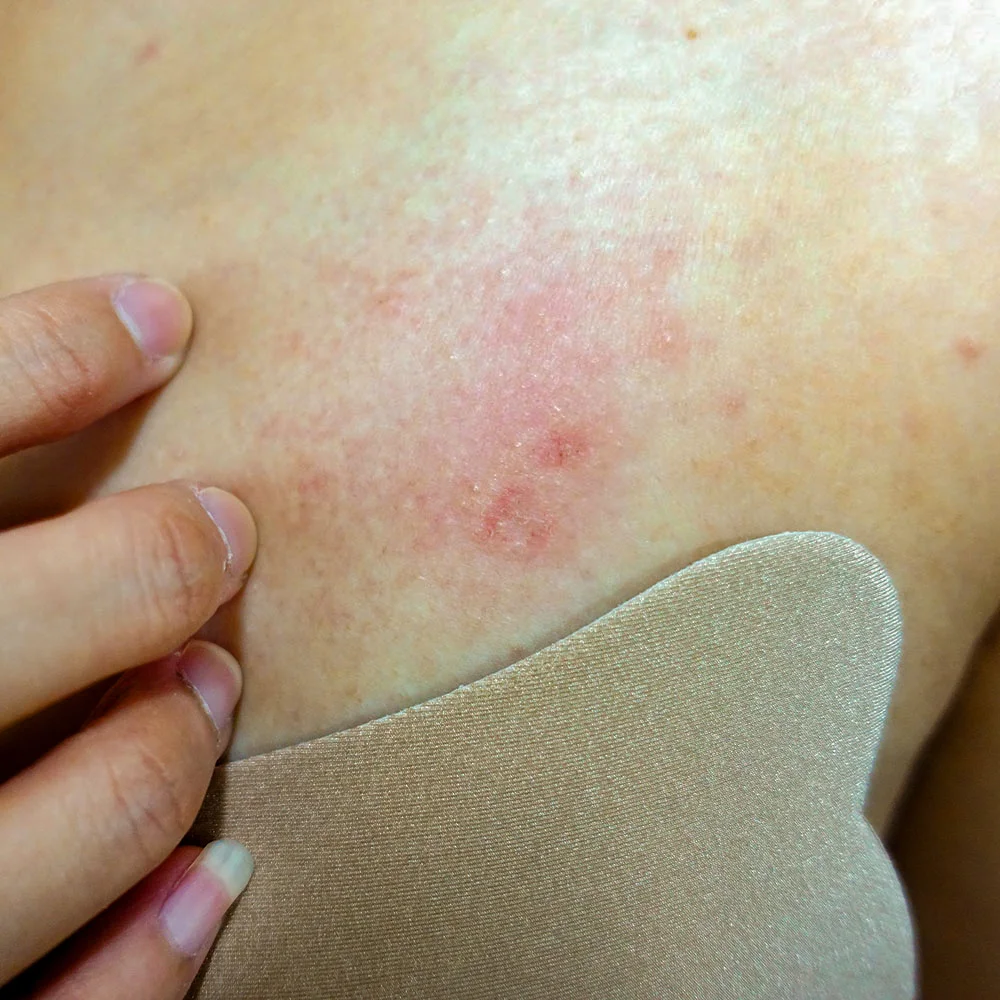Here's what we'll cover
Here's what we'll cover
Here's what we'll cover
When it comes to vaginal infections, there's really only one thing you want to know. Sure, knowing the symptoms will help you figure out if it's bacterial vaginosis or a yeast infection. Knowing what to expect from a healthcare provider and the treatments they might use may ease some worries, too.
But the question you really want to figure out the answer to is how long does bacterial vaginosis last? Translation: when will I go back to feeling normal again?
Once you start treatment with a simple course of antibiotics, the symptoms of bacterial vaginosis (BV) usually go away within two to three days. While in some cases it can resolve on its own without treatment, it can take longer to clear up and it can come back.
What is bacterial vaginosis and how is it diagnosed?
Put simply, BV is caused by a decrease in good bacteria and an overgrowth of bad bacteria in the vagina.
In general, our bodies (vaginas, in particular) are home to lots of bacteria, many of which help keep us healthy. But when the population of healthy types of bacteria decreases, it leaves room for others to settle in and cause problems (Kairys, 2020).
And believe it or not, it’s quite common. Some estimates say one in three women will experience BV at some point in their lives (Koumans, 2007).
Because of the uncomfortable symptoms, it’s usually easy to spot. Most people with BV report a thin white or greyish discharge and a fishy odor from their vagina. These classic symptoms typically appear after unprotected sex with a new partner, and the odor is typically more prominent after sex.
Symptoms and risks of BV
Untreated BV increases the risk of adverse effects in pregnant women like miscarriage, premature birth, and having a baby with a low birth weight (under 5.5 pounds), which itself can carry a lot of risks.
The most common sign of BV is white or gray vaginal discharge with a fishy odor (Kairys, 2020). Other symptoms may include (CDC, 2020-b):
Pain, itching, or burning in the vagina
Itching around the outside of the vagina
Burning sensation when urinating
While BV may seem like just a minor bother, it can actually increase your risk of contracting other STIs like chlamydia and gonorrhea.
These two infections are common and easily curable with a course of antibiotics. But left untreated, STIs can cause pelvic inflammatory disease (PID), which can cause serious fertility issues in the future (CDC, 2020-b).
Bacterial vaginosis treatments
The first step is to book an appointment with a gynecologist. They’ll ask you a few questions about your sexual activity, and likely perform a quick pelvic exam and take a swab. They then use the swab sample to look for changes in the acidity of your vagina and examine the types of bacteria there.
While you’re getting checked over, it’s a good idea to ask for a full panel of tests that include sexually transmitted infections (STIs). It's important to look for the full range of conditions, especially if you're sexually active since BV can look a lot like other STIs. It also increases the risk of catching other STIs like chlamydia or gonorrhea (Kairys, 2020).
While BV isn’t typically dangerous, it's uncomfortable and unpleasant. Luckily, a quick course of antibiotics is all you need to clear it up.
A healthcare provider usually prescribes metronidazole (brand name Flagyl), clindamycin (brand name Cleocin), or tinidazole (brand name Tindamax). Some of these are oral medications taken by mouth for 2–7 days, and others come as vaginal suppositories used for 3–5 days.
What can you do to clear it up faster?
Once you start treatment, you should see symptoms start to go away quickly. Basically, the faster you seek treatment, the faster your symptoms will resolve.
But even if your symptoms clear up before you finish your antibiotics, it's important to take the full course of treatment. This helps prevent infections that are resistant to treatment from developing (Kairys, 2020).
Since BV is caused by an imbalance of microbes that live in the vagina, probiotics have also been investigated as a treatment for BV or to prevent recurrent cases. While we’re not quite there yet, research around this is promising, showing solid evidence that probiotics may help reduce the chances of BV recurring.
Researchers think probiotics work by making the vagina less hospitable to "bad" bacteria. However, not all probiotics are created equal, so discuss this option with a healthcare provider before self-medicating with these supplements.
Causes of bacterial vaginosis
Researchers aren't sure what exactly causes BV, but they've narrowed down some contributing factors.
Douching, having sex with someone new, or engaging with multiple sex partners all impact the bacteria that make up your vaginal flora. This can lead to the development of BV. Douching especially should be avoided (CDC, 2020-b).
Those who've never had vaginal, oral, or anal sex can still develop BV, but it's most common in people with vaginas who engage in sexual activity (CDC, 2020-a; CDC, 2020-b).
Past research has found that having a female sex partner may increase your risk of developing BV by 60% (Kairys, 2020). If someone you've come into sexual contact with has BV, you should get tested as the infection can be passed on. That said, sexual partners with a penis cannot contract BV from partners with a vagina, and generally don't need to seek treatment (CDC, 2020-b).
How to prevent bacterial vaginosis
Proper hygiene for your vagina goes a long way toward preventing BV.
This includes wearing breathable clothes and cotton underwear, wiping from front to back after using the restroom, and using mild soaps when you shower. Changing your pad or tampon regularly while on your period may also help.
If you use sex toys, be sure to clean them thoroughly with hot water and mild, unscented soap. You may be able to decrease the risk of BV if you use condoms every time you have sex (CDC, 2020-b).
DISCLAIMER
If you have any medical questions or concerns, please talk to your healthcare provider. The articles on Health Guide are underpinned by peer-reviewed research and information drawn from medical societies and governmental agencies. However, they are not a substitute for professional medical advice, diagnosis, or treatment.
References
Center for Disease Control and Prevention (CDC). (2014). Bacterial vaginosis - CDC fact sheet. Retrieved Aug 3, 2020 from https://www.umhealthpartners.com/wp-content/uploads/2016/09/bv.pdf
Center for Disease Control and Prevention (CDC). (2020-a). CDC - bacterial vaginosis statistics. Retrieved Aug 03, 2020 from https://www.cdc.gov/std/bv/stats.htm
Centers for Disease Control and Prevention (CDC). (2020-b). STD facts - bacterial vaginosis. Retrieved Aug 03, 2020 from https://www.cdc.gov/std/bv/stdfact-bacterial-vaginosis.htm
Homayouni, A., Bastani, P., Ziyadi, S., et al. (2014). Effects of probiotics on the recurrence of bacterial vaginosis. Journal of Lower Genital Tract Disease, 18 (1), 79-86. doi: 10.1097/lgt.0b013e31829156ec. Retrieved from https://pubmed.ncbi.nlm.nih.gov/24299970/
Kairys, N. & Garg, M. (2020). Bacterial vaginosis. StatPearls . Retrieved Aug 4, 2020 from https://www.ncbi.nlm.nih.gov/books/NBK459216/
Koumans, E. H., Sternberg, M., Bruce, C., et al. (2007). The prevalence of bacterial vaginosis in the United States, 2001-2004; Associations with symptoms, sexual behaviors, and reproductive health. Sexually Transmitted Diseases, 34 (11), 864-869. doi: 10.1097/olq.0b013e318074e565. Retrieved from https://journals.lww.com/stdjournal/Fulltext/2007/11000/The_Prevalence_of_Bacterial_Vaginosis_in_the.6.aspx
Mayo Clinic. (2019). Bacterial vaginosis. Retrieved Aug 5, 2020 from https://www.mayoclinic.org/diseases-conditions/bacterial-vaginosis/symptoms-causes/syc-20352279
Mohammadzadeh, F., Dolatian, M., Jorjani, M., et al. (2014). Comparing the therapeutic effects of garlic tablet and oral metronidazole on bacterial vaginosis: A randomized controlled clinical trial. Iranian Red Crescent Medical Journal, 16 (7), E19118. doi: 10.5812/ircmj.19118. Retrieved from https://sites.kowsarpub. com /ircmj/articles/55178.html
Webb, L. (2021). Probiotics for preventing recurrent bacterial vaginosis, Journal of the American Academy of Physician Assistants , 34 (2), 19-22. doi: 10.1097/01.JAA.0000731484.81301.58. Retrieved from https://journals.lww.com/jaapa/fulltext/2021/02000/probiotics_for_preventing_recurrent_bacterial.2.aspx










